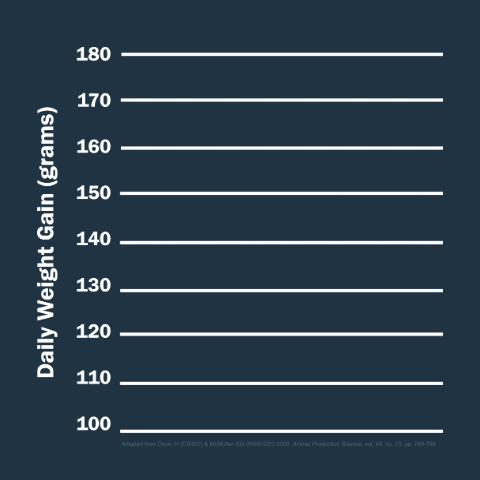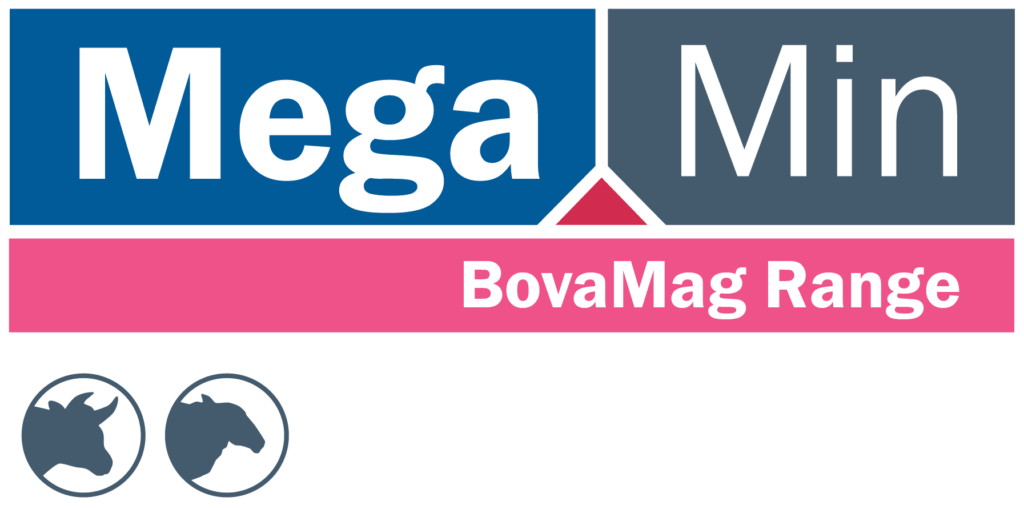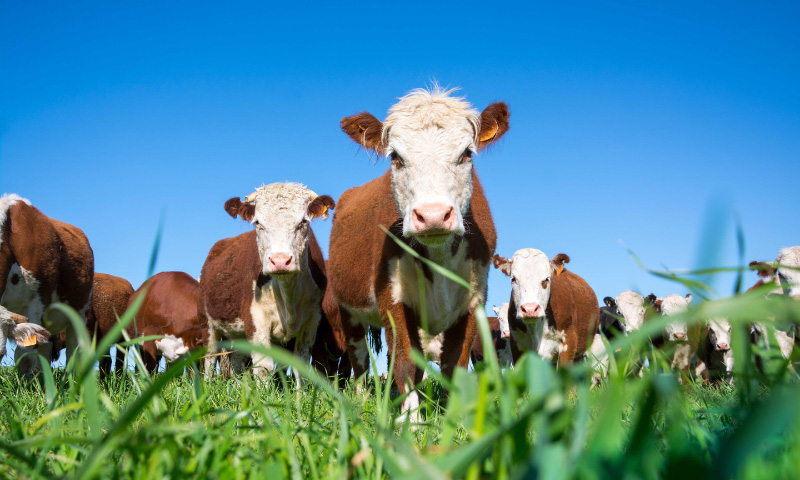Isolated rain has fallen and the widespread drought means there is a potential high demand on oats and other winter grazing cereals to fill the current feed gap. Those with irrigation have commenced planting as ground temperatures become more favourable.

Source: H Dove (CSIRO) & KG McMullen (NSW DPI), Animal Production Science, 2009, 49 (10) 749-758
Anything we do for the next 12 months has got to generate a good return on investment. We have a lot of ground to make up and there is a need to maximise daily weight gains for any cattle or sheep running on crops this winter. Apart from adequate moisture and nutrition to maximise the yield of our winter forages, we then need to rapidly adjust cattle to this dietary change and slow the rate of passage of green feed when cattle/sheep are scouring on high moisture/low fibre oats, rye and barley crops. This same concept also applies to any lush, green early growth grass after rain.
Many benefits can be achieved from planting a winter forage crop such as oats for livestock to graze. The investment might be considered for a number of reasons, whether it’s filling a winter feed gap, reducing grazing pressure on other pastures, reducing the necessity for hand feeding or providing a high-quality stock feed. Regardless of the reason that producers have chosen to plant a forage crop, everyone wants to get a return on this investment.
There are some management strategies to consider that can help increase your return on this investment. Magnesium supplementation is critical when grazing winter forages, even on soil types high in Magnesium. Scientific trials conducted by Dove and McMullen (2009) generated up to 31% increased daily weight gains with magnesium supplementation.
There are a number of animal health disorders that are associated with livestock grazing lush forage such as scouring, pulpy kidney, grass tetany, milk fever and nitrate/nitrite poisoning.
Being prepared for any of these disorders occurring should be considered when planning a forage grazing operation. Here are a few strategies to help your stock utilise the nutrients from lush, green feed.
Here are a few strategies to help your stock transition onto green feed:
- Ensure stock are vaccinated for clostridial diseases (pulpy kidney).
- Never move hungry stock directly onto a young crop. It takes time for rumen microbes to adapt to any changes in the diet. If possible, gradually introduce stock onto crops by increasing length of grazing each day.
- Before grazing a forage, introduce MegaMin Extra Magnesium as a loose lick to ensure desired intake (100-150 grams per day) is achieved. Extra Magnesium ‘Sweet’ is a more palatable version to achieve intake for stock on bore water or sodic soils.
- Providing stock with access to roughage can help increase daily weight gains .Straw or hay should be fed if adequate dry grass is not available. This is difficult in a year like this where fibre supplies (both hay and grass) are low.
- It can be beneficial to provide stock with an additional energy source such as cereal grain to help balance the high protein intake. If you’re interested in feeding a grain assist ration with your oats crop talk to us for advice and assistance in balancing up a ration. Feeding grain/energy can increase daily gains and stretch your winter forage further. This is also an option to introduce some fibre
Forage crops like oats, wheat and rye as well as rapidly growing, lush green pasture can have excessive amounts of some nutrients such as potassium for example and they can also be very limiting in others like magnesium. Magnesium is absorbed in the rumen and uptake is inhibited by high protein, high fatty acid concentrations and high potassium that is common when livestock have access to lush green feed. It is quite common to see stock that are scouring when grazing lush forage due to the high water content and lack of effective fibre in the plant and this situation can quickly lead to a magnesium deficiency. If insufficient magnesium is absorbed from the diet, a catastrophic outbreak of grass tetany may occur.
Magnesium Supplementation for Green Feed
Due to high levels of water and low levels of effective fibre in lush, green pasture, it is common to see stock scouring. Because magnesium is absorbed in the rumen, this increases the risk for magnesium deficiency. In addition, high levels of protein, fatty acids and potassium, commonly found in lush green pasture, can inhibit the uptake of magnesium.
Providing stock with adequate magnesium supplementation goes a long way in helping prevent an outbreak of grass tetany. Magnesium is generally very bitter, so AgSolutions have developed a number of products in the MegaMin Extra Magnesium and MegaMin BovaMag range including a “Sweet” blend to assist with establishing the right intake. We want cattle to be eating around 150g per head per day and sheep 10-20g per head per day.

Extra Magnesium Range
High Magnesium Supplement for Livestock Grazing Lush Green Feed or Winter Cereals

BovaMag Range
High Magnesium Medicated (Bovatec®) Supplement for Livestock Grazing Lush Green Feed
If you would like to discuss your supplementation options with an AgSolutions staff member please contact us with your questions or free call 1800 81 57 57 and don’t forget to ask for MegaMin Extra Magnesium at your preferred rural store.
